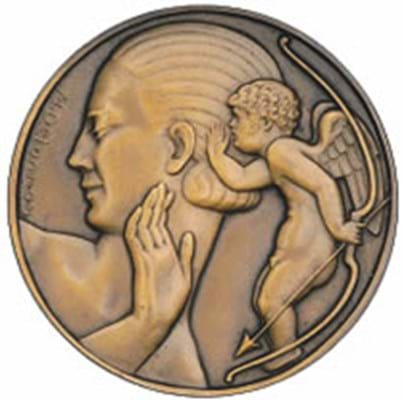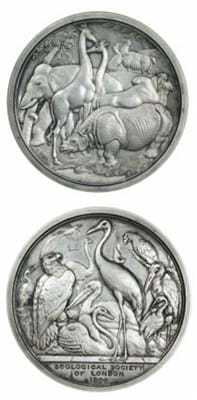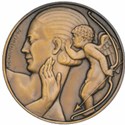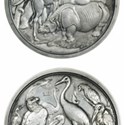The highest price of the day - let's get it out of the way first - was the £16,000 paid for an 1839 proof set down to the farthing and (this is important) contained in its original leather fitted case. I am led to wonder if the market for proof sets, from George IV onwards, is cooling off a shade.
There have been quite a lot of these sets on offer over the last five years or so and they have been fetching prices well above their estimates. This one was estimated at £15,000-20,000, a figure which seems to have been justifiably created by recent precedent.
Well, it made it - just. This leads to the suspicion that a recent high-water mark has perhaps been reached. This view is supported by the fact that proof sets of Victoria dated 1887 and 1893, each made £5000 - their low estimates. This could indicate something about just one section of the top end of the British market.
Now for things which are arguably more fun and indeed affordable. Coin catalogues make dry reading, so it is refreshing when a description is particularly elegantly turned. Quite a long way into the catalogue - lot 1373 to be exact - is a bronze Art Deco medal (1928) named Conseils d'Amour and sculpted by M. Delannoy. No description is required, the picture is worth the proverbial 1000 words.
What was particularly appealing was the catalogue description, so undryly numismatic. I will not resist to quote it: "a young woman listening to suggestions whispered into her ear by Cupid". How we know she is a woman is not explained, but it is an appealing medal and on a cold December day it only realised the low estimate - just £50.
The averred purpose of this petite histoire is to inform that Art Deco medals are surely very inexpensive indeed.
We should return to something less flippant. Frequently this column seeks to relate coins and medals to art, history and connoisseurship. Well, get this. High Victorian art can scarcely be separated from the Landseer family. The massive (75mm) Zoological Society of London's Prize medal was sculpted by the celebrated coiner B. Wyon after designs by T. Landseer in 1826.
What a wonderful medal it is, as both sides show. This one was awarded to the Sultan of Zanzibar for work over the period 1870-88. The medal was issued in gold for special services, in silver (as this example) for presentation, and in bronze to favoured zoo-keepers. Five in gold, 59 in silver and 22 in bronze were issued. I have only ever seen it in silver.
The estimate (£1500-2000) seemed to me to be confident but perhaps the Landseer connection swayed it. In the event it was justified, making a deserved £1600.
The delights of Deco... for only £50
The final Dix Noonan Webb (15% buyer’s premium) 2004 sale in London, on December 14, was a massive 1610-lot affair with a diversity of offerings. The total hammer take was £282,905.








